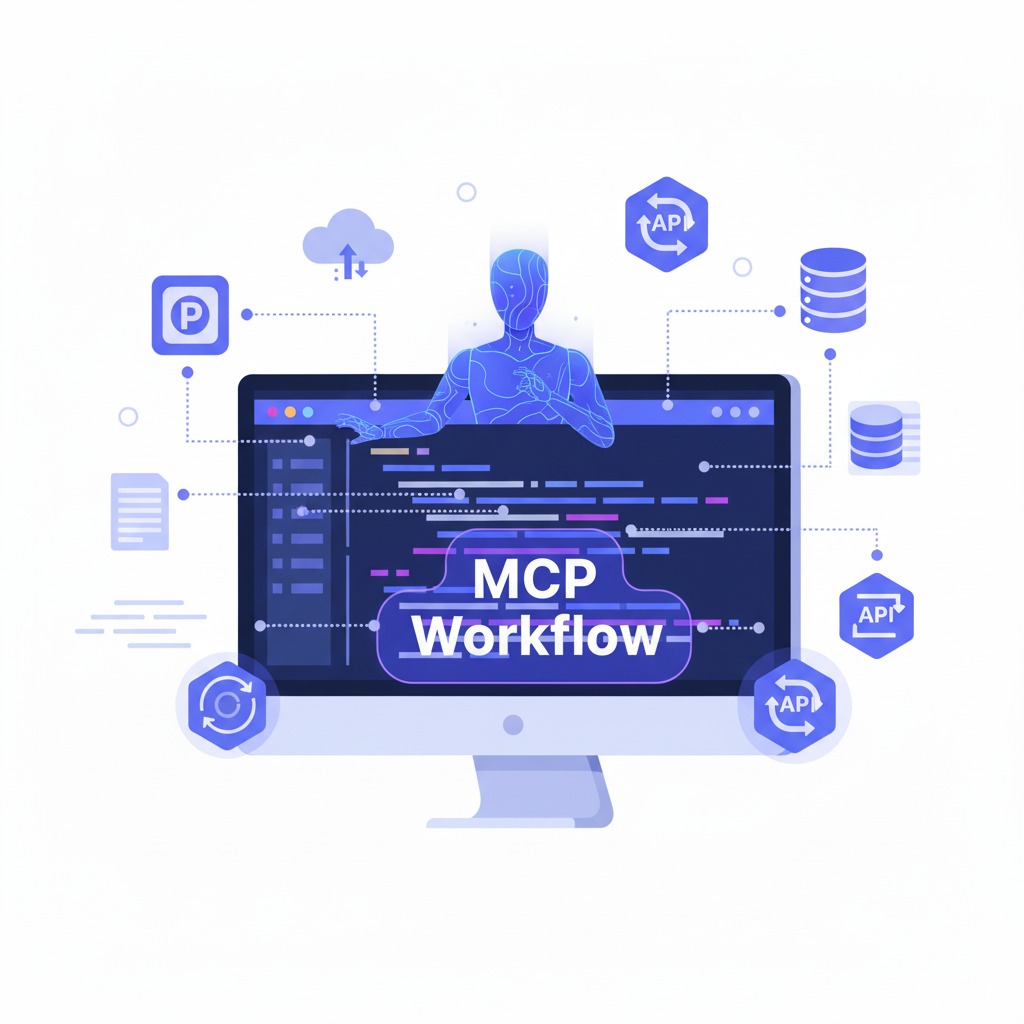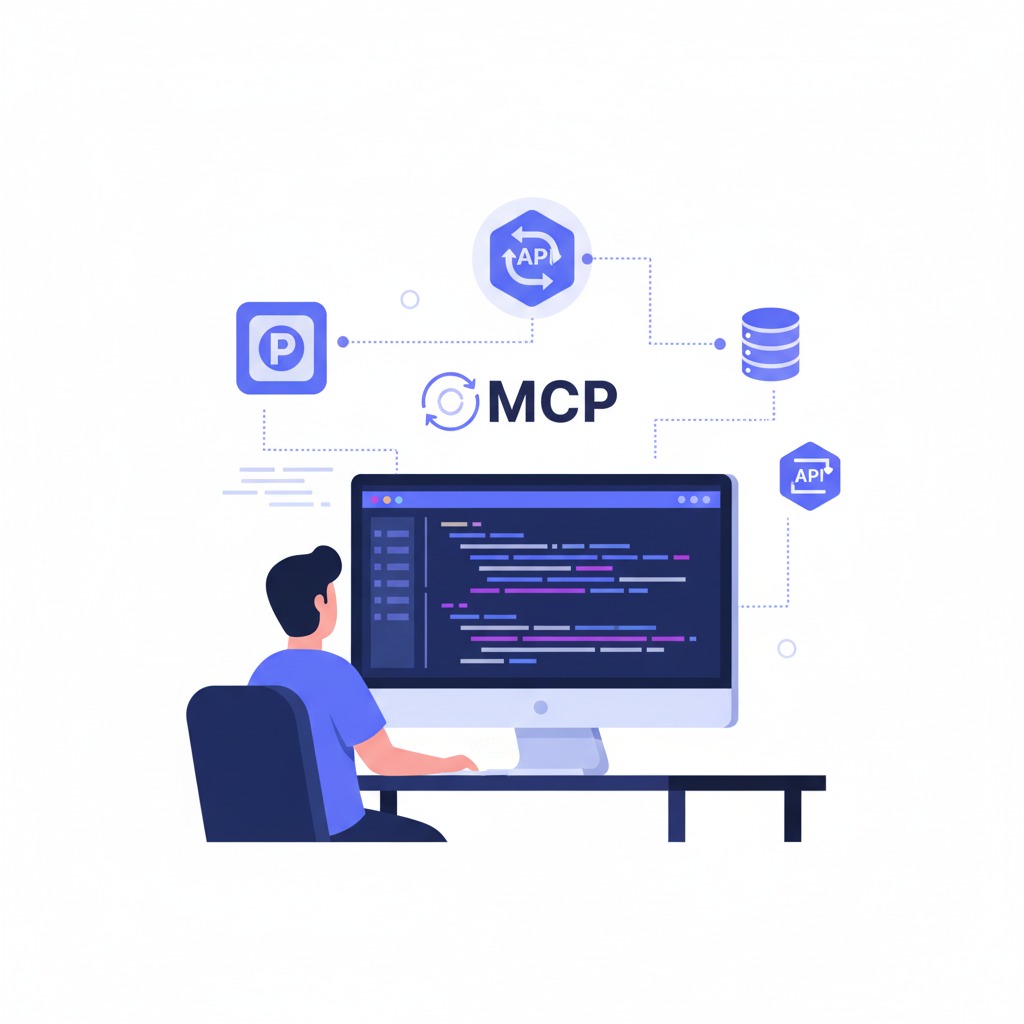How to Use Model Context Protocol (MCP) in Cursor

How to Use Model Context Protocol (MCP) in Cursor
If you're building with models in Cursor and keep re-writing glue code for APIs, file systems, or dev tools, the Model Context Protocol (MCP) will make your life easier. MCP gives Cursor's Composer a standard way to discover resources, call tools, and reuse prompts exposed by an external process called an MCP server.
This post shows how to add an MCP server to Cursor, verify it works, and troubleshoot common issues—without buzzwords.
What you’ll need
- Cursor with Composer enabled.
- For stdio servers: Node.js (or the runtime your server needs).
- For SSE servers: a reachable HTTP(S) endpoint.
- Optional: any API keys your server requires.
MCP in 30 seconds
- Client: Cursor’s Composer (the Agent).
- Server: a separate process exposing capabilities.
- Capabilities:
- Resources — read surfaces (files, DB queries, docs).
- Tools — actions you can run (search, write, transform, deploy).
- Prompts — reusable, parameterized templates.
- Transport:
stdio(local process) orSSE(HTTP streaming).
Cursor connects to the server, lists capabilities, and invokes tools with your approval.
Install & configure in Cursor
- Open settings → Features → MCP.
- Click + Add New MCP Server.
- Fill in:
- Name: any friendly label (e.g., “Weather TS”).
- Type: stdio or SSE.
- Command / URL:
- For stdio: a shell command that starts the server.
- For SSE: the server’s SSE endpoint URL.
- Save. If tools don’t appear, click Refresh in the MCP pane.
Example configurations
stdio (TypeScript weather server)
node ~/mcp-quickstart/weather-server-typescript/build/index.js
SSE (demo)
http://example.com:8000/sse
Tip: On macOS/Linux, make your server script executable so you can run it by name.
Using the tools inside Composer
Once the server is added:
- The Composer Agent will auto-invoke relevant tools when your prompt implies them.
- You can nudge usage by mentioning the tool name or describing its purpose.
- Cursor will ask for approval before running a tool. You can inspect parameters, approve, and see the tool’s structured response inline.
A quick smoke test
Try prompts like:
- “Use get_weather for Tokyo today and summarize.”
- “Read the repo README via the filesystem resource, then propose a one-line improvement.”
If you see an approval dialog and a response payload, you’re connected.
Environment variables (wrapping stdio servers)
Some servers need API keys or config. A simple wrapper script keeps your command clean:
#!/usr/bin/env bash
# file: start-weather.sh
export WEATHER_API_KEY="sk-..."
exec node ~/mcp-quickstart/weather-server-typescript/build/index.js
Then set the Command in Cursor to:
~/mcp-quickstart/start-weather.sh
You can also inline env vars:
WEATHER_API_KEY=sk-... node ~/mcp-quickstart/weather-server-typescript/build/index.js
Designing tools that work well in Cursor
- Name & describe clearly: models pick tools by name + description.
- Keep inputs small & typed: prefer concise JSON schemas; validate early.
- Return structure, not prose: let Cursor render; summarize only when needed.
- Be safe by default: require approval for destructive operations; log everything.
- Fail predictably: timeouts, retries, and helpful error messages.
Troubleshooting
| Symptom | Likely cause | Fix |
|---|---|---|
| Tools don’t show up | Server not running; stale list | Start the server; click Refresh; check logs/console |
| “Model can’t call tools” | Current model lacks tool-use | Switch to a model that supports tool calling in Composer |
| “Command not found” | Wrong path/permissions | Use an absolute path; chmod +x wrapper; verify Node version |
| SSE won’t connect | Wrong URL/CORS/TLS | Verify URL, scheme (https:// if needed), and server SSE headers |
| Tool runs but returns errors | Input mismatch/validation | Inspect arguments in approval dialog; align schema & prompt |
| Tools slow or time out | Network/DB slowness | Add timeouts and retries; paginate/stream large responses |
Advanced tips
- Multiple servers: add one per domain (filesystem, search, CI, etc.).
- Versioning: include a version in your server name (e.g., “Docs Search v0.3”).
- Least privilege: read-only resources by default; narrow scopes for tools.
- Observability: log inputs/outputs/errors with request IDs for debugging.
- Compose flows: read a resource → call a tool → format with a prompt for clean handoffs.
Uninstall or disable
Open Settings → Features → MCP, select the server, and remove or toggle it off. Keep wrapper scripts and keys out of your repo if they’re local-only.
Wrap-up
MCP turns scattered integrations into one clean interface. In Cursor, that means faster setup, safer tool calls, and reusable servers you can share across projects. Add a server, run a smoke test, and start replacing glue code with something you won’t have to rewrite next time.
Related Articles
Comments
Table of Contents
About the Author
Expert developer passionate about modern web technologies and AI-assisted development.
Popular Tags
Stay Updated
Get the latest articles and tutorials delivered to your inbox.

